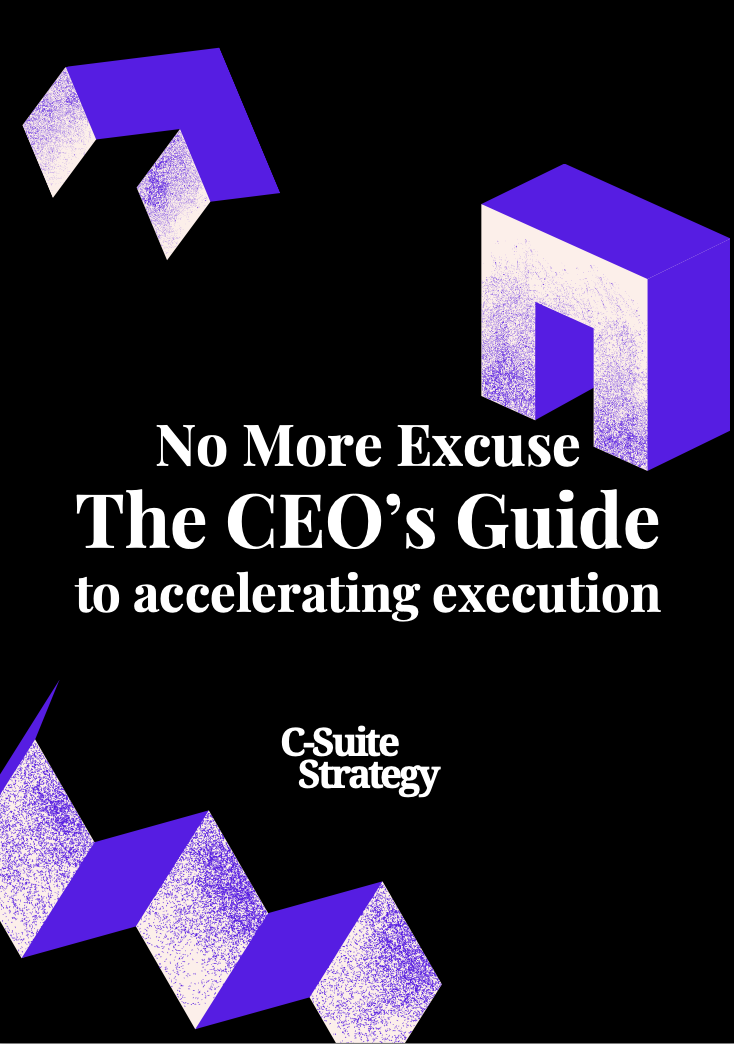Understanding Vision and Mission
Revisiting Your Company's Purpose
In the rapidly evolving landscape of modern business, understanding a company's vision and mission is vital for success. CEOs must ensure that their organization's purpose remains clear and relevant, not just to themselves but also to every employee. This clarity helps align goals and values, paving the way for cohesive action and strategic decision-making.
Key questions CEOs should ponder:
- Does the current mission statement reflect the company's core values and goals?
- How does the vision address both short- and long-term objectives?
- Are all team members, from leadership to entry-level employees, able to articulate the company’s purpose succinctly?
- How is the vision communicated throughout the company to foster employee engagement and a strong work environment?
At the heart of these questions is the understanding that a clear mission and vision can greatly enhance the employee experience, ensuring that employees not only understand the company's direction but also feel inspired to contribute to its future. By continuously revisiting and refining these foundational elements, a CEO can help employees remain aligned and motivated, driving the company towards its desired future. For more insights on the journey to becoming an effective CEO, consider exploring the crucial steps to rise to the top.
Assessing Market Position
Analyzing Market Dynamics
In today's rapidly evolving business landscape, understanding your company's market position is crucial for long-term success. CEOs must regularly evaluate their company's standing within the industry to ensure they are not only meeting current demands but also anticipating future trends. This involves asking the right questions about market dynamics and competitive positioning.
CEOs should consider the following questions to gain a comprehensive understanding of their market position:
- How does our company differentiate itself from competitors in terms of products, services, and customer experience?
- What are the emerging trends in our industry, and how are we adapting to them?
- Who are our biggest competitors, and what strategies are they employing?
- How do our company values align with market demands and customer expectations?
By addressing these questions, CEOs can better understand their market position and make informed decisions that align with the company's vision and mission. This strategic approach not only helps in maintaining a competitive edge but also in fostering a strong company culture that supports innovation and growth.
Moreover, engaging with employees to gather insights about market trends can enhance employee experience and ensure that everyone is aligned with the company's goals. This collaborative approach can lead to improved decision-making processes and a more resilient business strategy.
For a deeper dive into mastering CEO leadership skills for success, consider exploring mastering the art of CEO leadership skills which can provide further insights into effective leadership and strategic positioning.
Evaluating Leadership and Culture
Fostering a Culture of Leadership
For a CEO, one of the biggest challenges lies not just in driving business success but in nurturing a work environment that fosters leadership at every level. To understand how effectively a company's culture supports these goals, consider exploring key questions that probe the essence of leadership and employee engagement.
Firstly, ask: How does the company approach leadership development? Understand your employees and whether they have ample opportunities for growth and leadership. This might require reassessing the existing framework to ensure it aligns with the company's values and long-term objectives.
Next, explore how the leadership approach is integrated into daily operations. Does it align with the overall mission and vision of the company? An effective strategy includes nurturing an inclusive culture where every employee feels their contributions are valued. This is crucial for improving employee experience and engagement.
Consider how well your company values and culture are embedded in every aspect of business decision-making. It's also vital to ask if these strategies are facilitating the best of each team member's capabilities. When employees are engaged and informed, they are more likely to contribute meaningfully to the company's success.
Lastly, question how feedback mechanisms are structured. Is there an open channel for feedback that helps employees voice their concerns and innovations? This can promote a long-term positive culture and help in identifying the role of digital transformation in boosting company dynamics. Remember, the culture you build today is foundational for the company's future.
Financial Health and Sustainability
Evaluating the Financial Pulse
In the complex landscape of business strategy, understanding the financial health of a company is crucial. For CEOs, this goes beyond simply reviewing balance sheets or profit margins. It's about comprehending how financial decisions align with the company's long-term goals and values. A key question for any CEO is: How do our financial strategies support our mission and market position?
Financial health is not just about numbers; it's about the story those numbers tell. Are we investing in innovation and growth strategies that will sustain us in the future? Are we prepared for digital transformation? These are the questions CEOs must ask to ensure their company remains competitive and resilient.
Ensuring Sustainability
Financial sustainability is another critical area for CEOs to explore. This involves assessing whether the current financial strategies can withstand market fluctuations and unexpected crises. CEOs need to ask: How robust is our risk management framework? How prepared are we for potential financial disruptions?
To ensure sustainability, CEOs must foster a culture where financial prudence is balanced with strategic risk-taking. This approach helps employees understand the importance of financial decisions and how they contribute to the company's long-term success.
Engaging the Team
A company's financial health is also reflected in its employee engagement and work environment. CEOs should consider how financial decisions impact employee experience and company culture. Are we investing in our employees to enhance their engagement and productivity? How do our financial policies reflect our company values?
By asking these questions, CEOs can better understand how financial health intertwines with leadership and culture. This holistic approach ensures that financial strategies not only support the company's immediate needs but also its future aspirations.
Innovation and Growth Strategies
Driving Growth through Strategic Innovations
Effectively fostering innovation and growth strategies is indispensable for a CEO aiming to ensure the long-term success and sustainability of a company. CEOs frequently face pressing questions about their approach to innovation, particularly in understanding how to integrate new ideas into the existing company culture. Innovation is not merely about adopting the latest technologies; it's about creating a work environment where employees feel empowered to contribute new ideas. A crucial question to consider is: How can you help employees feel engaged and part of the digital transformation initiatives? By encouraging a company culture where employees believe in the business's core values, you can enhance employee engagement and inspire innovation at all levels. Here are key aspects to consider:- Aligning Innovation with Company Goals: Ensure that any new initiatives align with the long-term goals of the company. It's vital to understand the strategic direction and incorporate initiatives that support overarching company values.
- Encouraging a Collaborative Environment: Facilitate an open and inclusive work environment where all team members, from leadership to frontline employees, feel comfortable voicing their ideas and opinions.
- Measuring Success: Identify metrics that will help measure the success of innovation initiatives. This approach not only helps track progress but also provides clarity to both the CEO and employees regarding strategic objectives.
Risk Management and Crisis Response
Building a Resilient Framework
In the dynamic world of business, CEOs must prioritize risk management and crisis response as integral parts of their strategic framework. This involves more than just preparing for immediate challenges; it requires a long-term approach to ensure the company's resilience and sustainability.
Identifying Potential Risks
Understanding the company’s risk landscape is crucial. CEOs should regularly ask themselves and their teams about the biggest challenges that could impact their business. This includes market volatility, technological disruptions, and changes in regulatory environments. By identifying these risks early, a company can develop strategies to mitigate them effectively.
Developing a Proactive Crisis Response
Having a proactive crisis response plan is essential. CEOs need to ensure their leadership teams are prepared to act swiftly and decisively. This involves clear communication channels, defined roles, and responsibilities, and regular drills to test the company's preparedness. A well-prepared team can help navigate crises with minimal disruption to the business.
Embedding Risk Management in Company Culture
Risk management should be embedded in the company culture. This means fostering an environment where employees feel empowered to voice concerns and suggest improvements. Encouraging open dialogue can help uncover potential risks that might not be visible at the executive level. A culture that values transparency and proactive problem-solving can significantly enhance the company’s resilience.
Leveraging Technology for Risk Mitigation
Digital transformation plays a critical role in modern risk management strategies. CEOs should leverage technology to enhance decision-making processes, improve data analysis, and predict potential risks. By doing so, they can ensure the company remains agile and adaptable in the face of unforeseen challenges.
Ensuring Continuous Improvement
Finally, continuous improvement should be a core component of risk management and crisis response strategies. CEOs must regularly review and update their plans to reflect the evolving business landscape. This ongoing process ensures that the company is always prepared to face new challenges and seize emerging opportunities.









-large-teaser.webp)


-large-teaser.webp)

